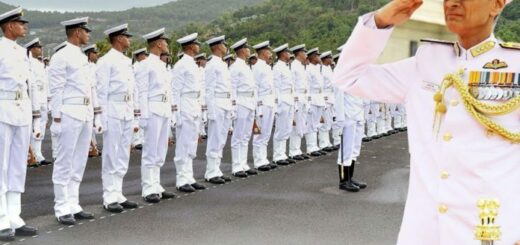National Current Affairs – UPSC/IAS Exams- 30th November 2019
Topic: Economy
In News: The government of India’s fiscal deficit has surpassed the annual target within the first seven months of the current financial year.
More on the Topic:
- India’s fiscal deficit in the first seven months through October stood at 102.4 per cent of the budgeted target for the current fiscal year.
- Govt’s revenue in this period was Rs 9.3 trillion and expenditure Rs 16.55 trillion.
- In a bid to boost economic growth from its 5 per cent level in the April-June quarter, the government has let go of revenues to the tune of Rs 1.45 lakh crore by announcing cuts in corporate tax in September.
- With economic growth falling to a six-year low of 5% in the April-June quarter, the government could toward the end of 2019 be forced to raise the fiscal deficit target.
What causes Fiscal Deficit?
- Fiscal deficit is when a government’s total expenditures exceed the revenue that it generates (excluding money from borrowings). Deficit does not mean debt, which is an addition of annual deficits.
Measures taken by the Government to keep Fiscal deficit under check:
- The Fiscal Responsibility and Budget Management Act, 2003 (FRBMA) has been enacted to institutionalize financial discipline, reduce India’s fiscal deficit, improve macroeconomic management and the overall management of the public funds by moving towards a balanced budget and strengthen fiscal prudence; A target of around 3-4% has been pegged.
- There is increased emphasis on tax-based revenue(seen in case of GST) and measures have been taken to reduce tax evasion.
- The government has set a Disinvestment target of Rs 90,000 crore, in 2019 budget, to boost its revenue.
- Government has taken to rationalisation of subsidies.
- The government in 2016, removed the distinction between planned and non-planned expenditure from the Union Budget, and switched to capital and revenue spending classifications to create a clear and effective link between the government’s earnings, spending and outcome.
Some measures to keep ‘Fiscal Deficit’ under check are:
- The first and the foremost way is through aggressive disinvestment of Air India and other state owned enterprises.
- Prominent among these include cleaning up of balance sheets of regular commercial banks.
- The government may also use simple ways such as tweaking the definition of expenditures such as recapitalization of the banks to keep it outside the ambit of definition of fiscal deficit.
- Unspent funds for defence and other ministries, special dividends from state-owned companies, deferment of some non-essential expenditure may also help bridge the gap.
- Some other steps such as measures to arrest GST evasion, tax on earnings from the stock market and merger of oil companies may also help.
- Reduction in subsidies by the government will also help reduce the deficit.
- A broadened tax base may also help in reducing the government deficit.
Model Mains Question: What is the status of fiscal deficit in India? What are the measures taken by government to keep ‘Fiscal Deficit’ under check?
Source: Hindu
Topic: Environment and Ecology
In News: A new study has concluded that clownfish, made so popular by the animated film Finding Nemo and cannot be expected to be able to adapt to a rapidly changing environment.
More on the Topic:
- Clownfish typically live at the bottom of shallow seas in sheltered reefs or in shallow lagoons. This habitat that is under threat.
- The fish breed only in sea anemones, sharing a symbiotic bond. Clownfish shelter in the anemone and are the only fish that do not get stung by the nematocysts of the anemone. The anemone benefits because clownfish can defend the anemone from fish that might eat it.
- The anemones, like coral reefs in general, are under direct threat from the impacts of climate change.
- The anemones share another symbiotic bond, with algae. Under stress in warming waters, the algae leave the anemones. If the algae stay away too long, the anemone starve to death. Which leaves the clownfish without it’s dwelling ecosystem.
- The clown fish’s ability of the population to persist and the genetic potential to adapt to increasingly rapid environmental change is almost nil.
- There are no particular genetic variants that contribute more offspring to the next generation. The quality of the host anemone contributes most to the ability of the clownfish to renew its population
- Their future depends on the quality of their habitat.
Source: Hindu
Topic: Inter National Relations
In News: Prime Minister Narendra Modi offered a credit line of $400 million for infrastructure projects and $50 million for counter terror measures to Sri Lanka during visit by its new President Gotabaya Rajapaksa.
More on the Topic:
- New Delhi and Colombo agreed to work closely on matters related to the economy and security amid what is being seen as rising competition between China and the US for influence in the Indian Ocean region.
- Security has become even more important in bilateral ties after a series of bombings in luxury hotels and churches by suspected terrorists that killed over 250 people in the island nation in April.
- GOI also offered cooperation in developing the eastern and northern parts of Sri Lanka that are home to large populations of minority Tamils.
Concerns in the India Sri Lanka Relations:
- The China Factor: In recent years, China has extended billions of dollars of loans to the Sri Lankan government for new infrastructure projects, which is not good for India’s strategic depth in Indian Ocean Region.
- Sri Lanka also handed over the strategic port of Hambantota, which is expected to play a key role in China’s Belt and Road Initiative, to China on a 99-year lease.
- China has also supplied arms as well as provide huge loans to Sri Lanka for its development.
- Fishermen Issue: Given the proximity of the territorial waters of both countries, especially in the Palk Straits and the Gulf of Mannar, incidents of straying of fishermen are common.
- Fishermen often risk their lives and cross the demarcate International Maritime Boundary Line IMBL rather than return empty-handed, but the Sri Lankan Navy is on alert, and have either arrested or destroyed fishing nets and vessels of those who have crossed the line.
- India and Sri Lanka have agreed to set up a Joint Working Group (JWG) on Fisheries between the Ministry of Agriculture and Farmers Welfare of India and Ministry of Fisheries and Aquatic Resources Development of Sri Lanka as the mechanism to help find a permanent solution to the fishermen issue.
Source: PIB
Topic: Science and Technology
In News: Indian Navy successfully test-fired the BrahMos supersonic cruise missile, from the Navy’s stealth destroyer INS Kochi.
Highlights of the Report:
- It has been jointly developed by India and Russia and has been in service with Indian Navy since 2005. It is world’s fastest cruise missile and has a strike-range of over 290 km.
- BRAHMOS missile have supersonic speed of Mach 2.8. It also has a very low-cruising altitude of 10 metres at terminal phase and pin-point accuracy which has made the warship one of deadliest in Indian Navy fleet.
Source: Hindu
Topic: Reports and Indices
In News: As per India corruption survey by Local Circles, a social media firm and the Transparency International India has revealed that 51 percent of Indian citizens paid a bribe in the last 12 months with property registration, police and municipality being top departments where bribes are allegedly demanded.
More on the Topic:
- Rajasthan and Bihar fared the worst in country with 78% and 75% of respondents admitting to paying bribes, while Telangana topped the list in south India. The survey was carried out between October 2018 and November 2019.
- Kerala, Goa, Gujarat, Odisha, West Bengal, Haryana and Delhi are least corrupt states.
- It had a total of 1.9 lakh responses from nearly 81,000 unique respondents in 248 districts across 20 Indian states.
- As compared to 2018, India’s overall ranking in Corruption Perception Index has risen 3 places to 78 out of 180 countries. While an average of 56% of respondents admitted to paying bribes in 2018, the number has come down to 51% in 2019.
Most Corrupt States in India:
- Rajasthan tops corruption chart in India. As per India Corruption Survey, 78% people in Rajasthan, participating in survey, admitted to paying a bribe to get work done.
- Bihar follows Rajasthan and was placed at second spot. In Bihar 75 % of citizens admitted to paying a bribe to get their work done.
- Uttar Pradesh was ranked third in list. In UP 74 % of citizens admitted to paying a bribe to get their work done. Jharkhand shares 3rd spot with UP, where 74% citizens admitted to paying a bribe to get their work done.
- Telangana rounds off top 5 list of ‘Most Corrupt States in India’, with about 67% of citizens admitted to paying bribes to get numerous pending work completed.
- Punjab ranks sixth in list, where 63% citizens accepted to paying bribes to get their work done. Karnataka shares the spot with Punjab.
- Tamil Nadu ranks seventh in most corrupt state’s list. Around 62% of citizens admitted to paying bribes to get their work done.
Source: Hindu
Topic: Polity and Governance
In News: The Jannayak Janta Party of Haryana has been granted the status of a recognised State party and has been allotted a symbol by Election Commission of India.
More on the Topic:
- Political parties are registered by the election commission for the purpose of elections and granted recognition as national or state parties on the basis of their poll performance.
- The other parties are simply declared as registered-unrecognised parties.
- The recognition determines their right to certain privileges like allocation of the party symbols, provision of time for political broadcasts on television and radio stations and access to electoral rolls.
Conditions for Recognition as a State Party
- If it secures 6% of the valid votes polled in the state at a general election to the legislative assembly of the state concerned and in addition, it wins 2 seats in the assembly of the state concerned or
- If it secures 6% of the valid votes polled in the state at a general election to the Lok Sabha from the state concerned and in addition, it wins 1 seat in the Lok Sabha from the state concerned or
- If it wins 3% of seats in the legislative assembly at a general election to the legislative assembly of the state concerned or 3 seats in the assembly, whichever is more or
- If it wins 1 seat in the Lok Sabha for every 25 seats or any fraction thereof allotted to the state at a general election to the Lok Sabha from the state concerned or
- If it secures 8% of the total valid votes polled in the state at a General Election to the Lok Sabha from the state or to the legislative assembly of the state. This condition was added in 2011.
Source: PIB



















